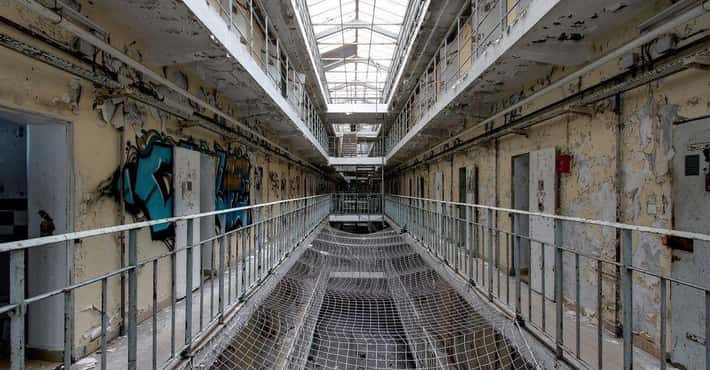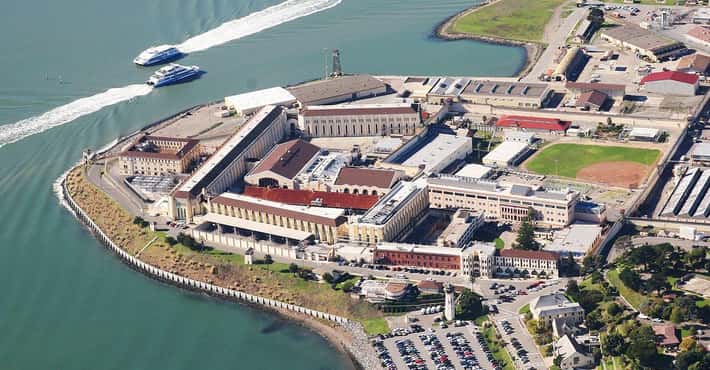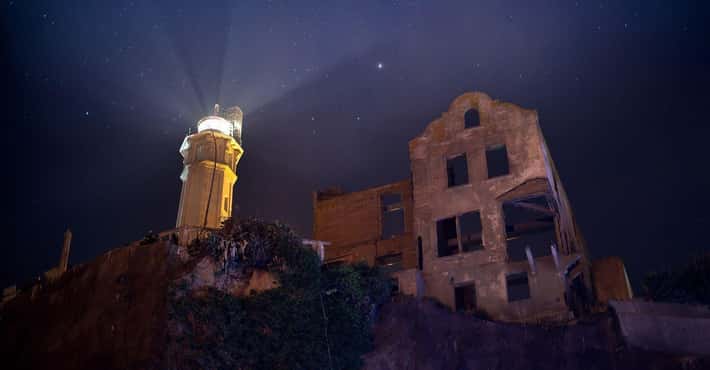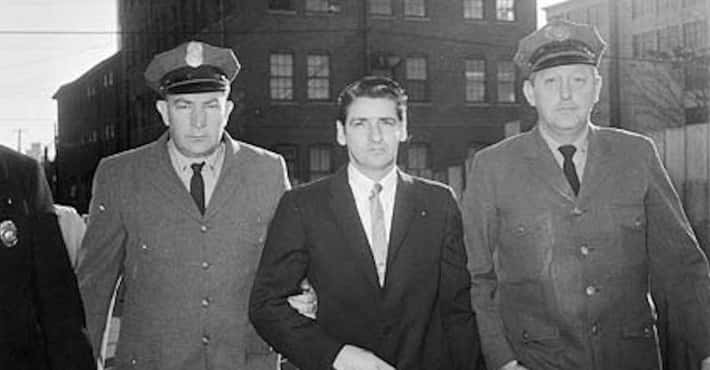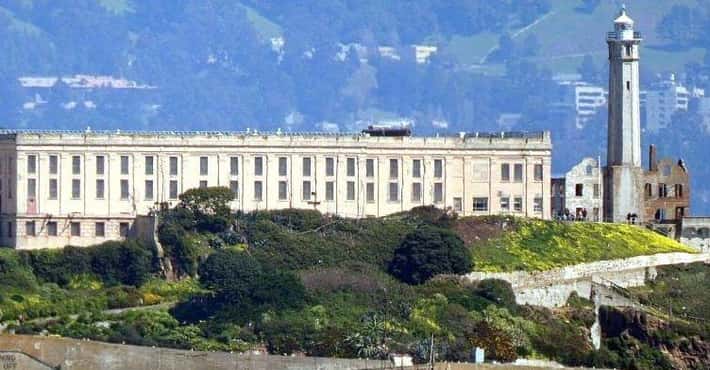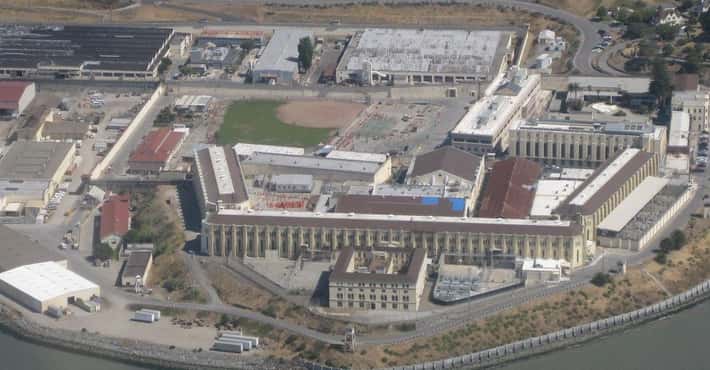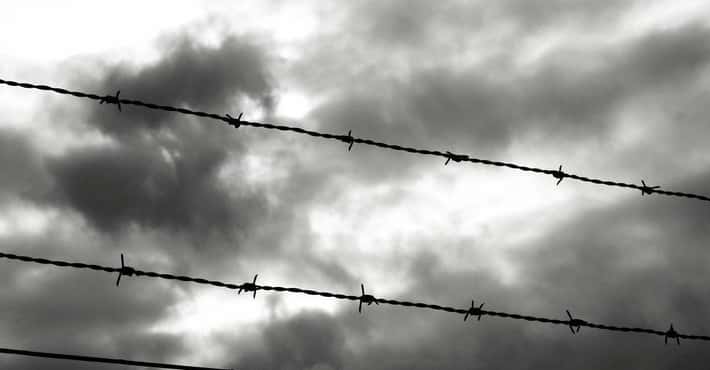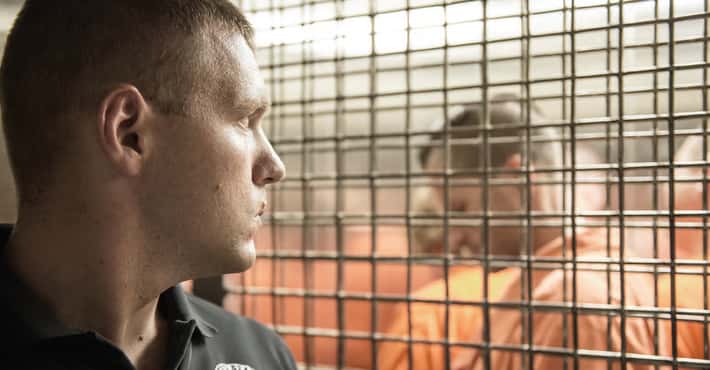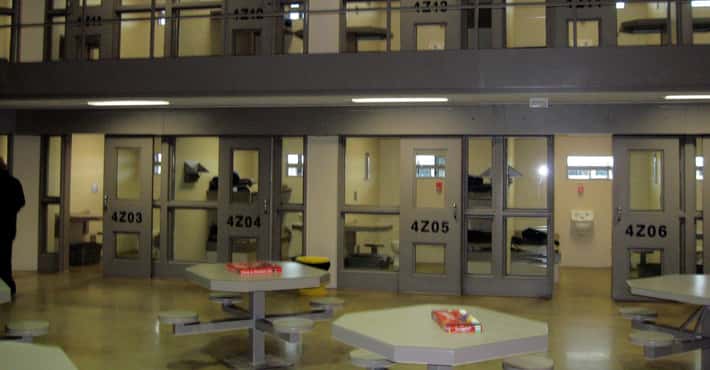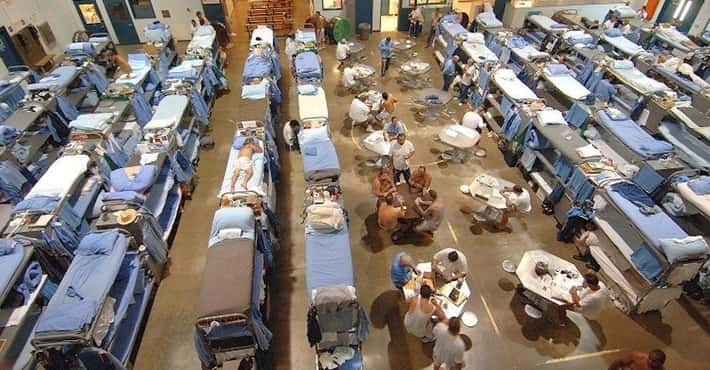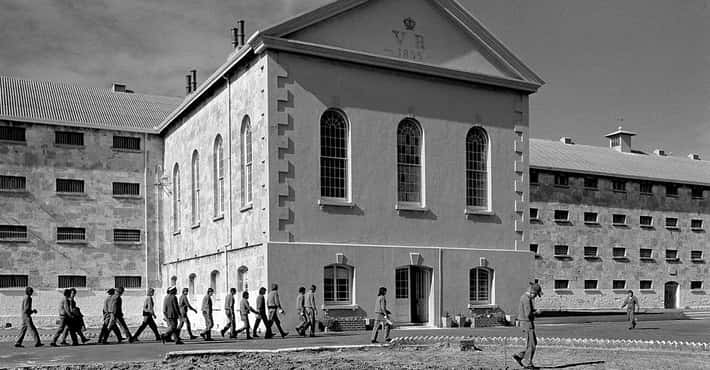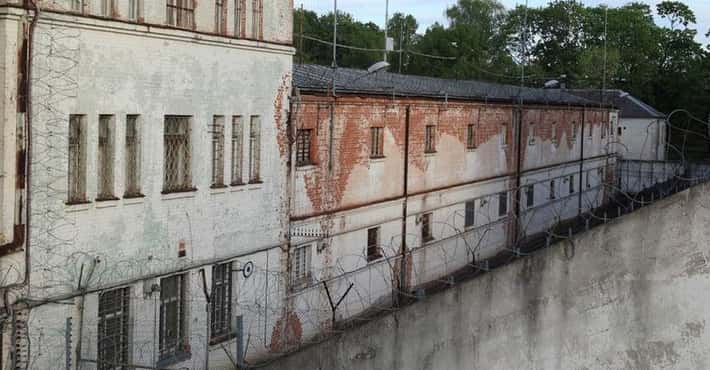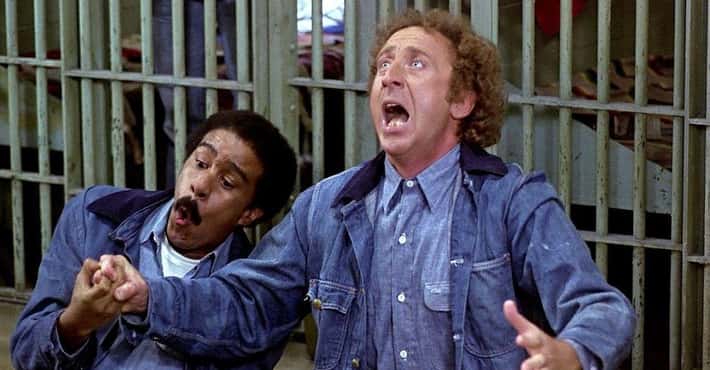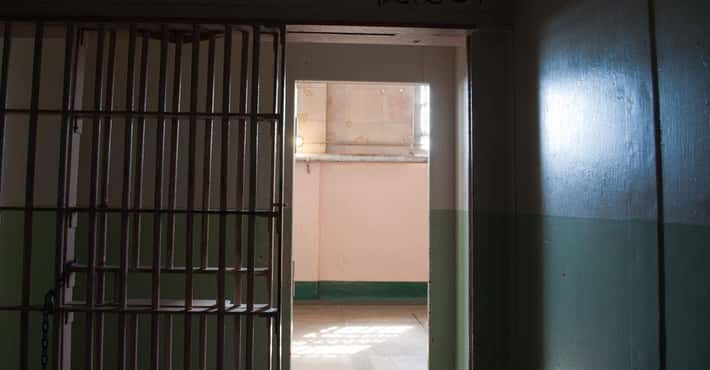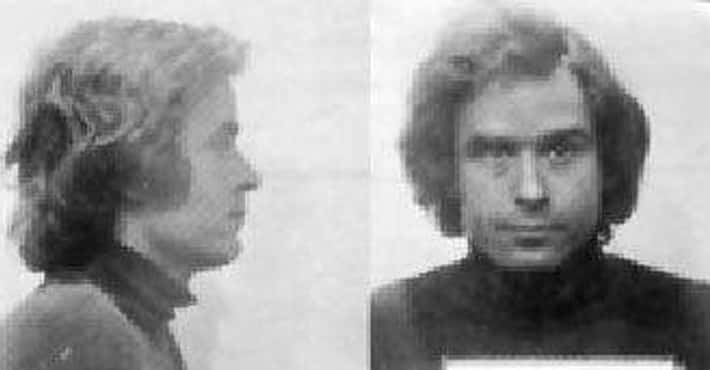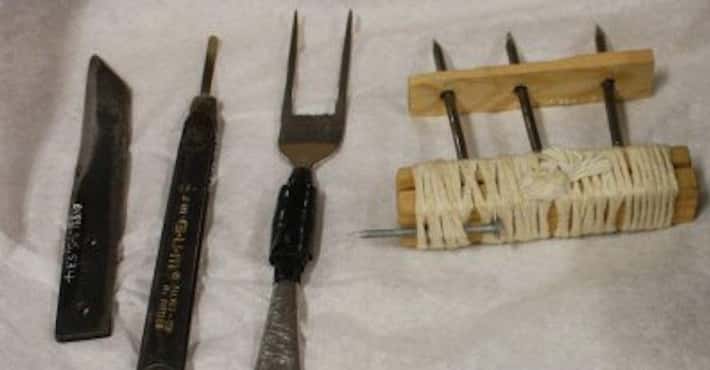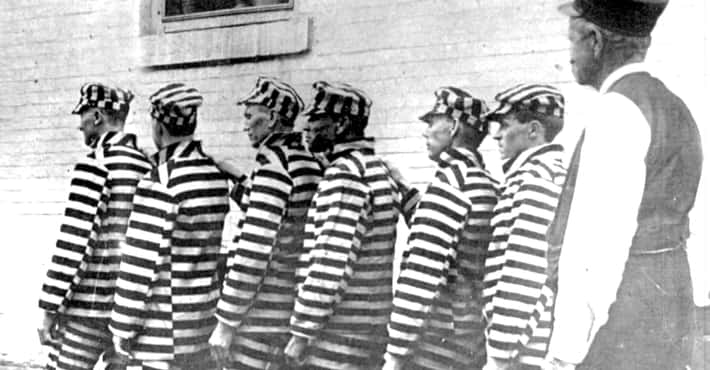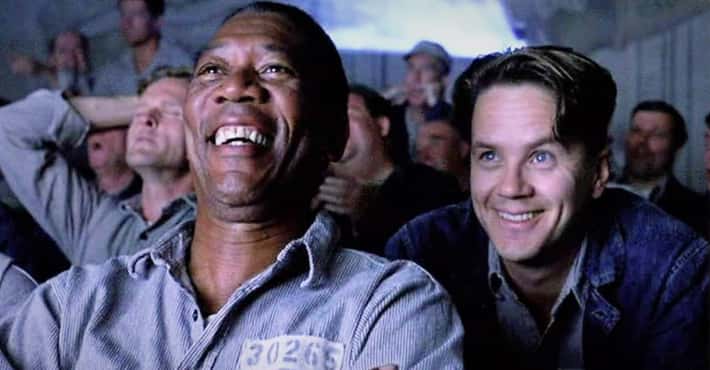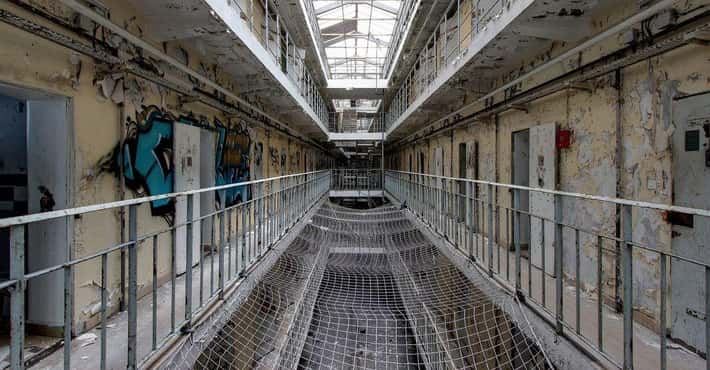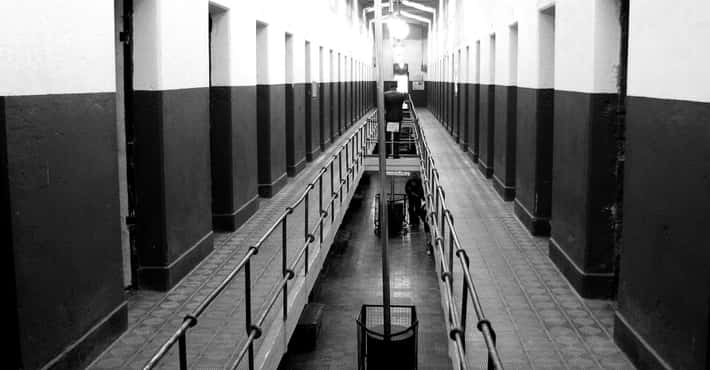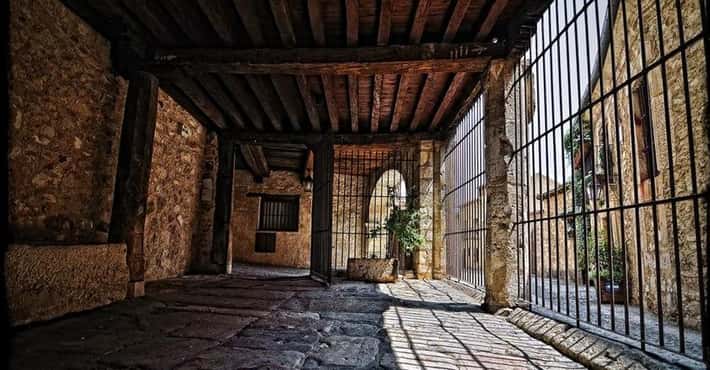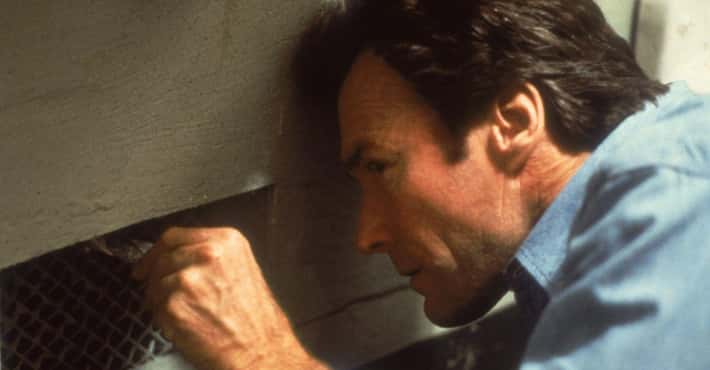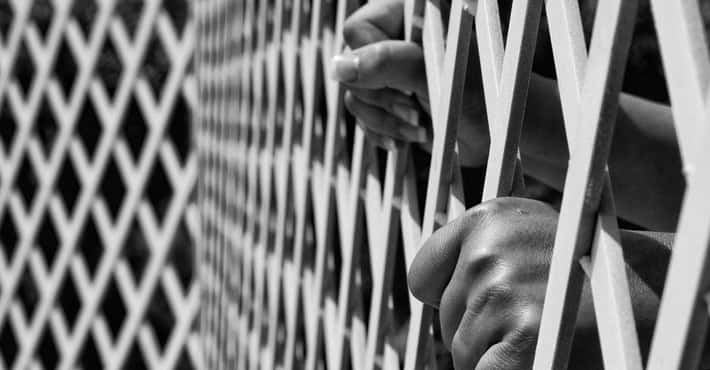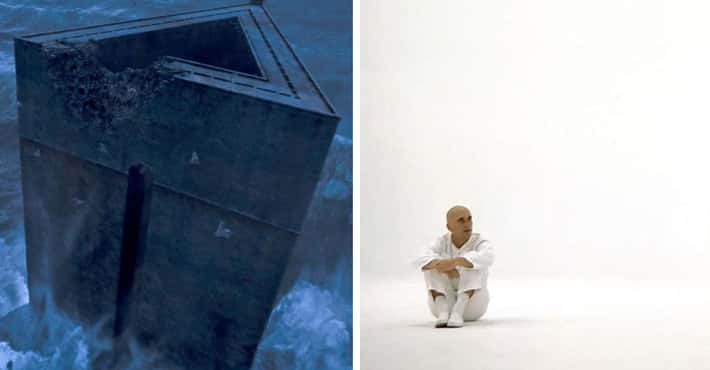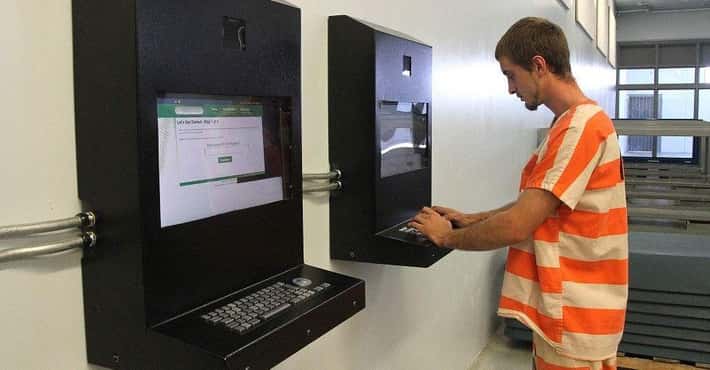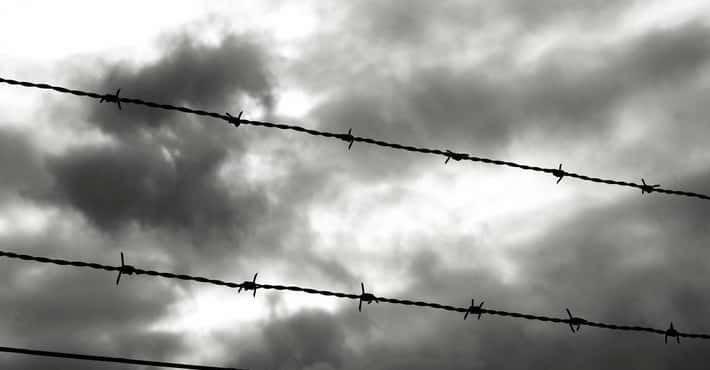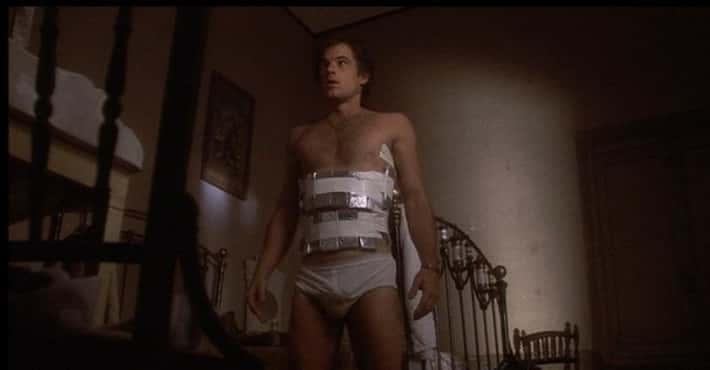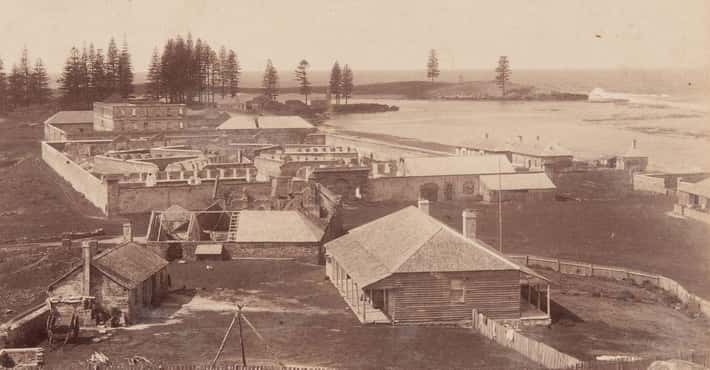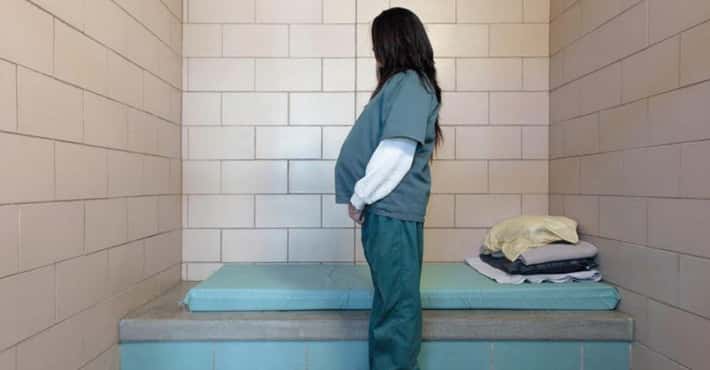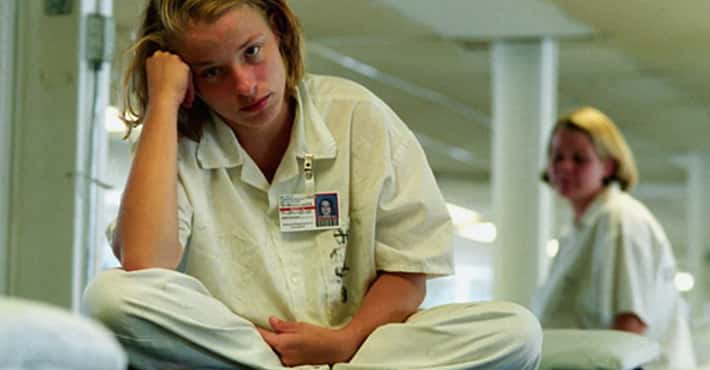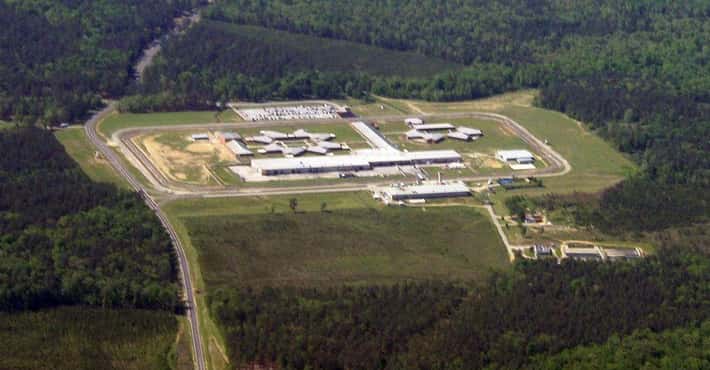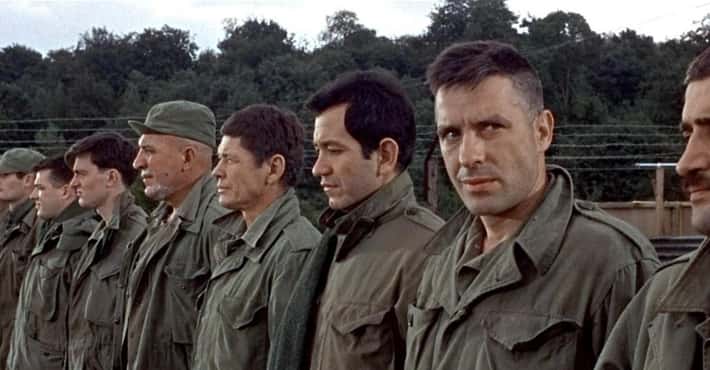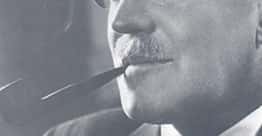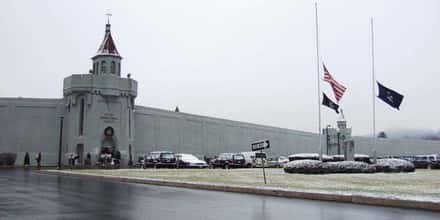
- Photo:
- Romain FLIEDEL
- Wikimedia Commons
- CC BY-SA 3.0
Every Alcatraz Escape Attempt And How It Went Wrong
Joe Bowers, 1936
Joseph "Dutch" Bowers was sent to Alcatraz for a relatively minor offense - taking less than $17 from a rural store in California. Because there was a post office located inside the establishment, Bowers' act was a federal one and landed him in a federal facility.
Joe Bowers struggled with life in Alcatraz, seen by the prison psychiatrist on several occasions. In 1935, the doctor decided there was, "a strong temptation to believe that this man is truly psychotic, but one must be on one's guard, as he has something to gain if he can induce us to believe that he is insane."
Bowers tried to end his own life in March 1935 and repeatedly harmed himself while incarcerated at Alcatraz. Bowers became the first man to attempt escape on April 27, 1936. As he threw trash into the prison incinerator, his assigned work detail, he made his way to a wire fence and, according to E. F. Chandler, the guard on duty:
[He was] attempting to go over, then I yelled at him several times to get down but he ignored my warning and continued to go over. I fired two shots low and waited a few seconds to see the results. He started won the far side of the fence and I fired one more shot, aiming at his legs. Bowers was hanging on the fence with his hands but his feet were pointing down toward the cement ledge. After my third shot I called the Armory and reported the matter. When I returned from phoning the body dropped into the Bay.
One observer recalled seeing Bowers make his way to the outside while another thought Bowers was climbing up the outside of the fence. While there were many interpretations of his actions - whether or not he was deranged and the guard overreacted or he was aware of what he was doing - Bowers perished from the harm he sustained during the attempt, a fate ruled "Died While Attempting to Escape."
Theodore Cole And Ralph Roe, 1937
Theodore Cole and Ralph Roe both worked in the Model Industries Building at Alcatraz, Cole as a janitor and Roe as a rubber processor.
Cole, 25 years of age, was a convicted kidnapper. He only escaped capital punishment thanks to the pleas by a local women's organization at his trial. Roe, seven years older than Cole, was at Alcatraz for bank heists. Both men reportedly had attempted escapes from previous federal facilities, namely McAlester Prison in Oklahoma.
Cole and Roe spent the weeks or months leading up to their attempted escape from Alcatraz preparing for the feat. They slowly sawed the bars in one of the windows of the Model Industries Building, reattaching them with putty and paint until the time was right. On December 16, 1937, Cole and Roe made their move.
During the early afternoon, Cole and Roe climbed through the window, dropped to the ground, and headed for the cliffs. It was a foggy day, which they used to their advantage. They broke a lock on one of the gates and jumped into the San Francisco Bay.
Unfortunately, the storm that brought in the fog also caused a fierce current. Cole and Roe tried to swim their way to freedom but were never seen again. Their remains were never found.
James Limerick, Jimmy Lucas, And Rufus Franklin, 1938
In his account of his time at Alcatraz, Warden James A. Johnston noted , "imprisonment in Alcatraz didn't lessen [the prisoners'] desire to escape; it merely lessens their chances of success." He was well aware there could be more attempts and, if nothing else, Ted Cole and Ralph Roe in 1937 had demonstrated escape was possible. As a result, Johnston bulked up security at the industrial building where the majority of inmates worked.
Increased security didn't stop a group of prisoners in the woodworking shop from trying to make their way to freedom. James Limerick, James "Jimmy" Lucas, and Rufus "Whitey" Franklin added aggression to their efforts, going after and killing a guard in the process.
Limerick was at Alcatraz as a habitual offender with a history of disciplinary problems while incarcerated. Lucas was sent to Alcatraz after escaping facilities in Texas and, like Limerick, was known for his defiance. He'd also once tried to eliminate fellow inmate , Al Capone. Franklin was a convicted offender and slayer who, while on a prison furlough to attend his mother's service, took a truck and pulled off a bank heist.
Collectively, the three men pooled their experiences and staged an escape attempt on May 22, 1938. After grabbing hammers and other heavy objects as weapons, they climbed the roof of the Model Industries Building. When guard Royal C. Cline happened upon them, they hit him over the head with a hammer, fatally wounding him. Another guard, Harold Stites, found them on the roof as they cut through a barbed-wire barrier. Stites fired at both Limerick and Franklin, ending their attempt. Once other guards arrived on the scene, Cline, Limerick, and Franklin were all taken to the prison hospital.
Cline succumbed to the damage done, as did Limerick, but Franklin survived. Lucas was taken to cellblock D - the block where prisoners in solitary confinement were held. Later, Lucas and Franklin were convicted of Cline's slaying and given life sentences for the offense.
Arthur 'Doc' Barker, Dale Stamphill, William Martin, Henry Young, And Rufus McCain, 1939
Arthur "Doc" Barker, son of the notorious Ma Barker, attempted an escape from Alcatraz in January 1939 with four other inmates, Dale Stamphill, William Martin, Henri Young, and Rufus McCain. All five men were in Alcatraz for bank heists, many with kidnapping charges too.
Barker coordinated the escape, arranging for an inmate-machinist carrying out repairs to leave saw blades and bar spreaders in proximity. Once the tools were moved to D Block - through a hole in the wall in C Block where a toilet was being repaired - Barker "got into a fight and they locked him up in D Block."
With all five men in D Block for what Warden Johnston called "discipline," they went to work. Around 3 am on January 13, 1939, Barker, Stamphill, Martin, Young, and McCain left their cells and entered one of the prison's corridors. Once there, they pried open the bars on an external window and climbed through.
During the morning count, a guard noticed the men were missing and they were soon discovered near the water's edge. All five men ran - reportedly in various states of undress - but, as guards called for them to stop, Barker kept running.
Barker was hit, as was Stamphill, but Martin, Young, and McCain surrendered. Barker had suffered gunshots to the head and leg while Stamphill was hit in the leg. Barker passed soon after.
Joe Cretzer, Sam Shockley, Arnold Kyle, And Lloyd Barkdoll, 1941
On May 21, 1941, four prisoners working in the industrial building at Alcatraz took several guards hostage and attempted to negotiate an escape.
Joe Cretzer, Sam Shockley, Arnold Kyle, and Lloyd Barkdoll. Cretzer and Kyle were brothers-in-law who were both serving life sentences for slaying.
Sam Shockley was, reportedly, developmentally disabled and went along with the others while Barkdoll's intimidating build worked to their advantage as he took the shop foreman hostage to kick off the holdout.
The four men were talked out of an escape by one of their captives, a guard named Paul Madigan. Madigan later became the third warden of Alcatraz, holding the position from 1955 to 1961.
John Bayless, 1941
John Bayless, described as a loner, tried to swim for freedom in September 1941. Imprisoned at Alcatraz for bank theft, Bayless walked away from garbage detail and made his way to the water before being discovered by a guard.
He surrendered without incident but his escape attempts were far from over. When he was taken to a San Francisco courtroom the following year, he made a run for it, only to be apprehended by a deputy in the process.
James Boarman, Harold Brest, Floyd Hamilton, And Fred Hunter, 1943
James Boarman, Harold Brest (sometimes spelled "Breast"), Floyd Hamilton, and Fred Hunter, once again, used their work duty in the industries building as their chance to escape. Boarman, Brest, and Hamilton were all at Alcatraz for bank theft and related offenses while Fred Hunter, an associate of Alvin Karpis, was in prison for kidnapping.
On April 14, 1943, the four men, armed with make-shift knives, or shivs, took two guards hostage. Officers Smith and Weinhold were gagged and tied up, after which Boarman, Brest, Hamilton, and Hunter jumped through a window and ran toward shore. They'd stripped themselves of their prison clothing but failed to grab some of the cans they had hoped to use as floatation devices. Also left behind were army uniforms they had taken from the prison laundry.
The men made it to the water, with Hamilton swimming roughly 30 yards into the San Francisco Bay. He sank and disappeared from sight, however, and presumably drowned. As guards fired at the men, yelling at them to surrender, Boarman was struck in the head by a bullet. Brest tried to keep his fellow escapee afloat but Boarman also descended and drowned.
Brest, slightly wounded, was recaptured , as was Hunter.
Boarman's body was never found . Warden Johnston made an announcement affirming Hamilton's end after an exhaustive search. The escapee -who had ties to Clyde Barrow and Bonnie Parker and once held the title "Public Enemy #1" - showed up two days later, having hidden in the industries building along the shore. Hamilton reportedly used the same window he'd escaped from to climb back into the building. Once there, he was apprehended by prison guards.
Huron 'Ted' Walters, 1943
Huron "Ted" Walters, Public Enemy #2 just behind Floyd Hamilton, was another associate of Clyde Barrow and Bonnie Parker. He hit several banks throughout Texas during the early 1930s, captured in 1938.
Walters spent years working in the laundry at Alcatraz and arranged for a Saturday work shift on August 7, 1943. While guards focused on the inmates in the prison yard - Saturdays were a time for recreation for most inmates - Walters snuck away from the laundry, climbed one of the fences, and attempted to get to the water.
By the time he got to Bay, guards had noticed his absence. He was apprehended and sent back to the prison.
Some sources indicate this escape attempt took place in 1948 instead of 1943. Either way, Walters didn't make it off the island.
John Giles, 1945
John Giles spent years literally piecing his exit together; it's considered one of the most creative escape attempts in the prison's history. Imprisoned for robbing a post office, Giles arrived at Alcatraz in 1935 or 1936. After he was assigned to work duty on the dock, he stole pieces of army laundry as they came in and out of the facility. Alcatraz outsourced its laundry facilities and, over time, Giles was able to put together a whole uniform.
Giles appeared on the dock in full uniform on July 31, 1945. He boarded the Coxe, a transport ship that made regular stops at the prison. The Coxe, which went back and forth from Angel Island and Fort Mason, didn't go to San Francisco, as Giles had hoped.
When the Coxe left Alcatraz, a regular headcount revealed one additional crew member on board. By the time the ship arrived at Angel Island, Giles had been found out and he was quickly taken into custody.
Giles' actions surprised his fellow inmates and guards alike. It also earned him the nickname "Sarge."
The 'Battle of Alcatraz' - Bernard Coy, Joe Cretzer, Marvin Hubbard, Sam Shockley, Miran Thompson, And Clarence Carnes, 1946
As the only escape attempt that involved repeat-offenders, the "Battle of Alcatraz" that took place in early May 1946 featured six prisoners : Joe Cretzer and Sam Shockley - both men who had tried to escape in 1941 - Bernard Coy, Marvin Hubbard, Miran Thompson, and Clarence Carnes.
Largely orchestrated by Bernard Coy, the men used arms from the weapons gallery located inside the prison. Coy had begun losing weight months earlier to be able to pry the bars open and get in between them to retrieve the arms. The prisoners put their plan underway on May 2, 1946, first distracting and then beating guard William Miller. The convicts looked for keys to the recreation yard - their path to freedom - something Miller had on his person. Miller gave them his keys but, in a preemptive act, had removed the recreation yard key from their grasp, throwing it in one of the prison toilets when they weren't looking.
The six prisoners tried to get into the recreation yard, to no avail. They soon realized they needed a new plan and began taking more hostages. Nine hostages were gathered up and put into cells, where Cretzer began shooting at them. When Cretzer fired into the cells, he fired at William Miller.
Coy began shooting at the guards gathered outside the cell house as well. Harold Stites, the guard who had hit James Limerick and Rufus Franklin in 1938, fired back at the prisoners but was hit along with other guards. Stites passed of the damage.
In a standoff that lasted for two days, both the Coast Guard and the Marines were called in. Grenades, teargas, and other tactics were used against the armed convicts and Robert Stroud, the so-called Birdman of Alcatraz, even attempted to negotiate a peaceful resolution.
By May 4, Crezner, Coy, and Hubbard had passed. William Miller also perished in the melee. Shockley, Thompson, and Carnes received harsh punishments for their actions and the slaying of two guards. Hubbard and Thompson were sentenced to capital punishment and sent to the the gas chamber at San Quentin prison. Carnes was sentenced to life in prison .
Floyd Wilson, 1956
A convicted slayer, Floyd Wilson was serving a life sentence at Alcatraz, where he worked on the dock. Keeping Alcatraz supplied required constant barges and ships arriving and entering the island and, when Wilson was pumping fresh water into the facility on July 23, 1956, he saw his chance to escape.
At first, guards believed Wilson boarded the water barge, but it was soon discovered that he merely walked away from his duty. Wilson was located many hours after disappearing, hiding in some rocks on the sea wall. He was, reportedly, cold and shivering - and surrendered without issue.
Aaron Burgett And Clyde Johnson, 1958
Aaron Burgett and Clyde Johnson assaulted a guard on September 29, 1958, while working on garbage duty. The guard, Harold Miller, was found tied up by one of his colleagues. Miller's uniform had been taken and he'd been tied to a tree.
Burgett and Johnson made it to the shore and they both tried to swim to freedom. They'd crafted fins made out of wood and made flotation devices out of plastic bags. Johnson balked at swimming for it after going only a few yards, returned to shore, and was apprehended.
Burgett continued swimming, but the treacherous waters were too much for him. Two weeks after the attempt, his body washed up on the island, "eaten full of holes."
Frank Morris And John And Clarence Anglin, 1962
The escape of Frank Morris and the Anglin brothers still puzzles investigators. Portrayed on-screen by Clint Eastwood in Escape from Alcatraz (1979), Frank Morris was in Alcatraz for bank theft, as were John and Charles Anglin. When guards did their morning count on June 12, 1962, all three men were gone.
The plan implemented by Morris and the Anglin brothers is thought to have been the brainchild of fellow prisoner Allen West. From the perspective of former guard Philip Bergan, however, Morris, "was a thinker. Anything connected with this escape that had any brains behind it can be credited to Morris."
West, Morris, and the Anglins began chipping away at walls around the ventilation ducts in their cells during the early months of 1962. They used spoons from the mess hall, slowly creating cavities large enough to crawl through. The also gathered old raincoats to make a raft and life vests and crafted dummy-like heads - made out of paper, hair from the barbershop, and soap - all in anticipation of their escape.
On June 11, 1962, the men - absent West, who was reportedly unable to get through his vent - crawled out of their cells, scaled the pipes along the wall, and climbed onto the roof of the prison. From there, it's believed they ran to the other side of the building, dropped to the ground, went to the water, and climbed aboard their raft. None of the men were ever seen again.
The FBI investigated the escape but never found any of the men's remains or evidence they survived. Officially, all three men were listed as missing.
John Paul Scott And Darl Parker, 1962
As the last escape attempt from Alcatraz, John Paul Scott and Darl Parker's efforts were, again, unsuccessful. Scott, in prison for theft and weapons charges, and Parker, incarcerated for theft and kidnapping, sawed through the bars on a window in the kitchen. They used string covered in kitchen cleaner, a substance so abrasive it allowed them to get through the bars in a few weeks.
On December 16, 1962, Scott and Parker climbed through the kitchen window and went down to the water. They, too, had crafted floatation devices out of items they could find and started to swim. The cold waters were too much for the men and Parker took refuge on a small group of rocks just off the island. Known as "Little Alcatraz," it was there that guards found him a short time later.
Scott kept swimming, pulled by the current. Scott washed up near the Golden Gate Bridge. He'd survived and was taken to the hospital. After being treated for hypothermia and shock, he was sent back to Alcatraz.
Alcatraz closed three months later.


















